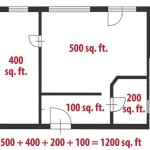Finding Original Building Plans For Your House
Locating the original building plans for a house can be an invaluable asset for homeowners. These plans provide a detailed record of the property's structure, layout, and the materials used in its construction. Access to such information can be beneficial for a variety of purposes, ranging from planning renovations to resolving property disputes. The process of finding these plans can sometimes be straightforward, while in other cases it requires a more investigative approach.
The availability of original house plans depends on factors such as the age of the house, local regulations for record-keeping, and whether previous owners retained these documents. Understanding where and how to search for these plans is the first step in a successful endeavor.
Local Government Archives and Building Departments
The most logical starting point for locating original building plans is the local government. City or county building departments are often responsible for archiving building permits and related documentation. The process involves identifying the relevant department, which is typically the same one that issues building permits in the present day.
Contacting the building department, either by phone or in person, is usually the initial step. Enquire about their record-keeping practices and whether they archive building plans. Be prepared to provide the property address and possibly the date of construction. Some departments might require additional information, such as the names of previous owners if known. It is important to note that many older records may not be digitally available and could require a physical search through archived files.
If the building department does maintain archives, inquire about the procedure for accessing these records. This might involve filling out a formal request form and paying a nominal fee for the search and retrieval of documents. Depending on the accessibility of the archives, a personal visit might be necessary to review the files. Scanning or photocopying the plans, if allowed, will ensure a permanent copy for future reference.
It’s important to manage expectations. Not all jurisdictions meticulously preserve older building plans. Factors such as space constraints, changes in record-keeping practices over time, and even accidental loss or damage can contribute to the unavailability of these documents. Some municipalities adopted digital archiving later than others, meaning older plans might exist only in paper format, if at all.
Beyond the building department, other local government offices might possess relevant information. The county recorder's office, for instance, often maintains records of property transactions, including deeds and surveys. While these documents may not contain detailed building plans, they could provide clues about the original builder or developer, which can be useful in further research.
Searching Through Previous Owners and Neighborhood Resources
If the local government search proves unsuccessful, the next step is to investigate the history of the property through previous owners and neighborhood resources. This approach relies on contacting individuals or organizations who might have access to information that the government agencies do not.
Start by researching the ownership history of the house. Property records, available through the county recorder's office or online property databases, can provide a list of previous owners and the dates of their ownership. Attempting to contact former owners, if possible, can be a valuable avenue for finding building plans. Former owners might have retained copies of the plans from when they purchased or renovated the property. Even if they don't possess the complete plans, they could offer insights into where the plans might have been archived, such as the architect's office or the original construction company.
Another useful resource is the neighborhood association or historical society, if one exists. These organizations often maintain archives of local history, including information about significant buildings and developments. Members of the association might be familiar with the history of specific houses in the area and could know where building plans are stored. Older residents who have lived in the neighborhood for many years can also be valuable sources of information, as they may recall details about the original construction or subsequent renovations.
Additionally, consider contacting local architects or construction companies that specialize in older homes. They might have worked on similar properties in the area and possess records or knowledge about the original building practices and designs. A professional with expertise in historical architecture can also offer advice on how to locate relevant documentation and interpret any plans that are found.
When pursuing this approach, it's important to be respectful of people's time and privacy. Clearly explain the purpose of the inquiry and be prepared to provide information that can help them recall details about the property. Building relationships with local experts and residents can significantly increase the chances of finding the desired building plans.
Architectural Firms and Original Construction Companies
If the previous avenues have not yielded the original building plans, tracing the architect or construction company responsible for the house's construction becomes the next logical step. This approach requires researching historical records and professional directories to identify the individuals or firms involved in the original project.
Start by attempting to identify the architect. If the building permit or any other documentation mentions an architect's name, research their professional history. Architectural firms sometimes maintain archives of their past projects, even those dating back several decades. Contacting the firm or its successor, if it still exists, can potentially lead to the discovery of the original building plans.
If the architect cannot be identified, focus on the construction company that built the house. Local business directories, historical newspapers, and construction industry associations can provide information about construction companies that were active in the area during the relevant time period. Contacting these companies, or their descendants, might reveal records of past projects, including building plans.
When pursuing this method, be prepared for the possibility that the architectural firm or construction company no longer exists or that its records have been lost or destroyed. However, even if the original firm is no longer in operation, its former employees or their families might possess valuable information. Online genealogy resources and professional networking platforms can be used to locate individuals who might have connections to the firm.
It is also worth considering the possibility that the house was built by an individual contractor or homeowner without involving a formal architectural firm or construction company. In such cases, finding the original building plans becomes more challenging. However, researching the history of homebuilding practices in the area during the relevant time period can provide clues about where such plans might have been stored.
If the original plans remain elusive, consider hiring a professional architectural historian or building researcher. These experts have experience in locating historical building documents and can employ specialized research techniques to uncover the desired information. Their expertise can significantly increase the chances of finding the original building plans, even in challenging circumstances. Be prepared to compensate them for their time and resources.
Successfully finding the original building plans can be a time-consuming and potentially expensive process. However, the value of these documents for planning renovations, resolving property disputes, or simply preserving the history of a home makes the effort worthwhile. A systematic approach, combined with persistence and resourcefulness, will increase the likelihood of achieving a positive outcome.

How To Get Blueprints Of Your House

Find House Plans For Your Old Blueprint Search Nethouseplansnethouseplans

House Plans How To Design Your Home Plan

House Plans How To Design Your Home Plan

House Plans How To Design Your Home Plan

House Plans How To Design Your Home Plan

House Plan Wikipedia

House Plans How To Design Your Home Plan

House Plans The Best Floor Home Designs Abhp

House Plans How To Design Your Home Plan
Related Posts








